FE | Risk Minimisation Patient
YAZ® product description: YAZ® 0.02 mg / 3 mg film coated tablets.1
Indication: Oral contraception.1
Composition: 24 light pink film-coated tablets containing 0.020 mg ethinylestradiol (as betadex clathrate) and 3 mg drospirenone. 4 white placebo (inactive) film-coated tablets containing no active substances. For oral use.1
Contraindications: Presence or risk of venous thromboembolism (VTE), i.e. venous thromboembolism – current VTE (on anticoagulants) or history of (e.g. deep venous thrombosis [DVT] or pulmonary embolism [PE], known hereditary or acquired predisposition for venous thromboembolism, such as APC resistance, (including Factor V Leiden), antithrombin-III-deficiency, protein C deficiency, protein S deficiency, major surgery with prolonged immobilization, a high risk of venous thromboembolism due to the presence of multiple risk factors; presence or risk of arterial thromboembolism (ATE), i.e. arterial thromboembolism – current arterial thromboembolism, history of arterial thromboembolism (e.g. myocardial infarction) or prodromal condition (e.g. angina pectoris), cerebrovascular disease – current stroke, history of stroke or prodromal condition (e.g. transient ischemic attack, TIA), known hereditary or acquired predisposition for arterial thromboembolism, such as hyperhomocysteinemia and antiphospholipid-antibodies (anticardiolipin-antibodies, lupus anticoagulant, history of migraine with focal neurological symptoms, a high risk of arterial thromboembolism due to multiple risk factors or due to the presence of one serious risk factor such as diabetes mellitus with vascular symptoms, severe hypertension, severe dyslipoproteinemia; presence or history of severe hepatic disease as long as liver function values have not returned to normal; severe renal insufficiency or acute renal failure; presence or history of liver tumors (benign or malignant); known or suspected sex-steroid influenced malignancies (e.g. of the genital organs or the breasts); undiagnosed vaginal bleeding; hypersensitivity to the active substances or to any of the excipients; concomitant use with the medicinal products containing ombitasvir/paritaprevir/ritonavir and dasabuvir.1
Special warnings and precautions for use: For further information on the following conditions/risks refer to the full prescribing information: VTE, ATE, depressed mood and depression, cervical cancer, breast cancer, benign or malignant liver tumors, mild or moderate renal impairment, concomitant use of potassium-sparing medicinal products, hypertriglyceridemia, increases in blood pressure, jaundice and/or pruritus related to cholestasis, gallstones, porphyria, systemic lupus erythematosus, hemolytic uremic syndrome, Sydenham’s chorea, herpes gestationis, otosclerosis-related hearing loss, hereditary angioedema, acute or chronic disturbances of liver function, cholestatic jaundice/cholestasis-related pruritus, diabetes mellitus, endogenous depression, epilepsy, Crohn’s disease, ulcerative colitis, chloasma, hereditary galactose intolerance, Lapp lactase deficiency, glucose-galactose malabsorption, ALT elevations, irregular bleeding.1
Undesirable effects: The most commonly reported adverse reactions with YAZ® when used as an oral contraceptive are nausea and breast pain. Serious adverse reactions are arterial and venous thromboembolism.1 For further information regarding the risk factors and symptoms of ATE and VTE, refer to the full package insert.
Adverse drug reactions which have been associated with the use of YAZ® , according to the MedDRA system organ classes and MedDRA terms2
|
SYSTEM ORGAN CLASS |
COMMON |
UNCOMMON |
RARE |
NOT KNOWN |
|---|---|---|---|---|
|
Infections and infestations |
|
|
Candidiasis |
|
|
Blood and lymphatic |
|
|
Anemia |
|
|
Immune system disorders |
|
|
Allergic reaction |
Hypersensitivity |
|
Endocrine disorders |
|
|
Endocrine disorder |
|
|
Metabolism and |
|
|
Increased appetite |
|
|
Psychiatric disorders |
Emotional lability |
Depression |
Anorgasmia |
|
|
Nervous system disorders |
Headache |
Dizziness |
Vertigo |
|
|
Eye disorders |
|
|
Conjunctivitis |
|
|
Cardiac disorders |
|
|
Tachycardia |
|
|
Vascular disorders |
|
Migraine |
Phlebitis |
|
|
Gastrointestinal disorders |
Nausea |
Abdominal pain |
Abdomen enlarged |
|
|
Hepatobiliary disorders |
|
|
Biliary pain |
|
|
Skin and subcutaneous |
|
Acne |
Chloasma |
Erythema multiforme |
|
Musculoskeletal and connective tissue disorder |
|
Back pain |
|
|
|
Reproductive system and breast disorders |
Breast pain |
Vaginal candidiasis |
Dyspareunia |
|
|
General disorders and |
|
Asthenia |
Malaise |
|
|
Investigations |
|
Weight increase |
Weight decrease |
|
- Bleeding irregularities usually subside during continued treatment.2 Return to content
Bayer AG, 13342 Berlin, Germany. www.Bayer.com
ALT – alanine aminotransferase; APC – activated protein C; ATE – arterial thromboembolism; DVT – deep venous thromboembolism; PE – pulmonary embolism; TIA – transient ischemic attack; VTE – venous thromboembolism
- YAZ® Abridged Summary of Product Characteristics. Return to content
- YAZ® Summary of Product Characteristics. Return to content






